Definitive Guide On How To Hire An Interior Designer For Your Home
Hiring an interior designer can be a daunting task, especially if you’ve never worked with one before. But with the right guidance, it can also be an exciting and rewarding experience that helps you create the home of your dreams.
In this definitive guide, we’ll walk you through the process of hiring an interior designer for your home, from defining your project goals to finding the right designer and managing the project.
Define Your Project Goals

The first step in hiring an interior designer is to define your project goals. What do you want to achieve with your interior design project? Are you looking to update a single room, such as your living room or kitchen? Or are you planning a whole-home renovation? Do you have a specific style in mind, or do you need help developing a design concept?
It’s important to have a clear understanding of your goals and expectations before you start looking for a designer. This will help you communicate your needs effectively and ensure that you and your designer are on the same page throughout the project.
Determine Your Budget
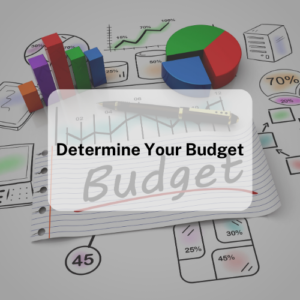
Once you have a clear understanding of your project goals, it’s time to determine your budget. Interior design services can vary widely in cost, depending on the scope of the project, the level of customization, and the experience and expertise of the designer.
Before you start looking for a designer, it’s important to have a realistic budget in mind. This will help you narrow down your options and find a designer who can work within your budget constraints.
Research Designers

Now that you have a clear understanding of your project goals and budget, it’s time to start researching designers. There are many ways to find interior designers, including online directories, social media, word-of-mouth referrals, and design magazines.
Start by looking for designers who specialize in the type of project you’re planning and who have experience working within your budget range. Look at their portfolio to get a sense of their design style and aesthetic, and read client reviews to see what others have to say about their work.
Interview Designers
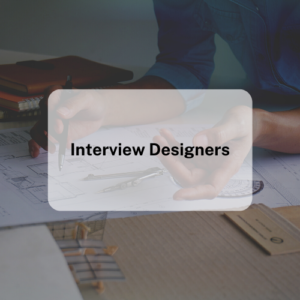
Once you’ve narrowed down your list of potential designers, it’s time to start interviewing them. Many designers offer a complimentary consultation to discuss your project goals and provide an estimate. Take advantage of this opportunity to ask questions and get a sense of their communication style and approach to design.
Some questions to ask during the interview process include:
- What is your design process?
- How do you determine a budget for a project?
- How do you handle changes or revisions during the design process?
- Can you provide references from past clients?
- What is your timeline for completing a project?
Check References

Before you hire a designer, it’s important to check their references. Ask for a list of past clients and contact them to ask about their experience working with the designer. Some questions to ask past clients include:
- Was the designer easy to work with?
- Did they listen to your needs and preferences?
- Did they stay within the budget and timeline?
- Did they provide clear communication throughout the project?
- Would you hire them again for future projects?
Sign a Contract
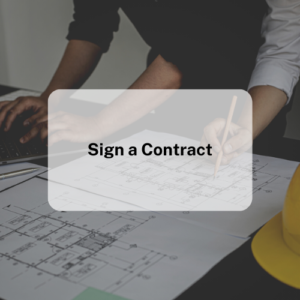
Once you’ve chosen a designer and agreed on the scope of the project, it’s important to sign a contract that outlines the terms and conditions of the project. This should include the scope of work, payment terms, timeline, and any other important details.
Make sure to read the contract carefully and ask any questions before signing. It’s also a good idea to have a lawyer review the contract to ensure that it’s fair and legally binding.
Manage the Project
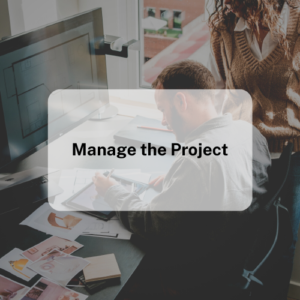
Throughout the project, it’s important to maintain clear communication with your designer and to stay involved in the decision-making process. This will help ensure that the project stays on track and that the end result is in line with your vision.
It’s also important to be prepared for changes or unexpected challenges that may arise during the project. This could include unexpected costs, design challenges, or delays in the timeline. Work with your designer to develop a contingency plan for these situations and stay open to adjustments to the original plan as needed.
In addition to communication, it’s important to stay organized throughout the project. Keep track of important documents, such as contracts, invoices, and design plans, in a designated folder or digital file. This will help you stay on top of the project and ensure that nothing falls through the cracks.
Benefits of Hiring an Interior Designer
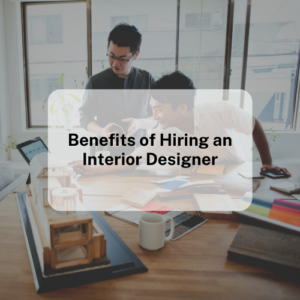
While hiring an interior designer may seem like an added expense, there are many benefits to working with a professional designer. Here are just a few:
- Professional expertise: Interior designers have years of experience and training in creating beautiful and functional spaces. They have a deep understanding of color theory, space planning, and materials selection, and can help you achieve the look and feel you want for your home.
- Access to resources: Interior designers have access to a wide range of resources and materials that may not be available to the general public. They can help you find unique and high-quality furnishings, fabrics, and finishes that will make your home stand out.
- Time-saving: Designing a home can be a time-consuming process, especially if you’re not familiar with the design industry. Hiring an interior designer can save you time and stress by handling the details of the project and ensuring that everything is done efficiently and on time.
- Budget management: While hiring a designer does come with a cost, they can often help you save money in the long run by avoiding costly mistakes and finding the best deals on materials and furnishings. They can also help you prioritize your spending and make sure that you’re getting the most value for your money.
- Increased resale value: A well-designed home can increase the resale value of your property. By working with an interior designer, you can create a space that appeals to a wider range of potential buyers and helps you get the most return on your investment.
Conclusion
Hiring an interior designer is a big decision, but it can also be a rewarding and exciting experience that helps you create the home of your dreams. By following these steps and working collaboratively with your designer, you can achieve a beautiful and functional space that meets your needs and exceeds your expectations. Whether you’re planning a small update or a whole-home renovation, hiring an interior designer can help you achieve the look and feel you want for your home.